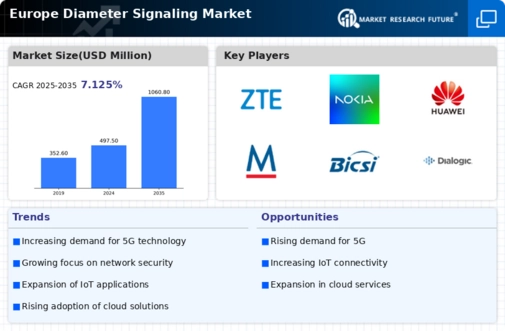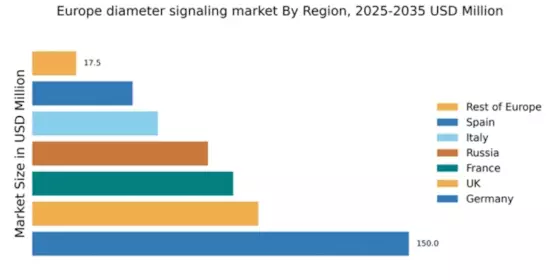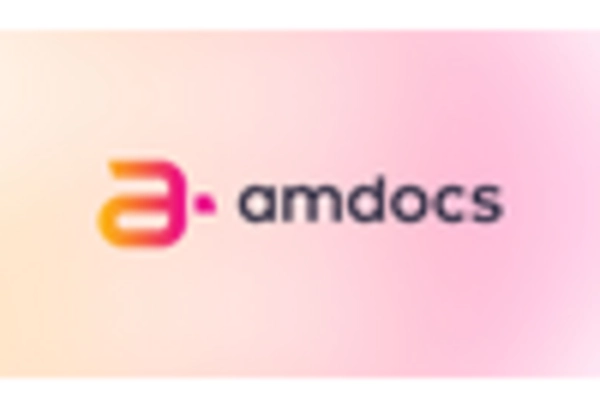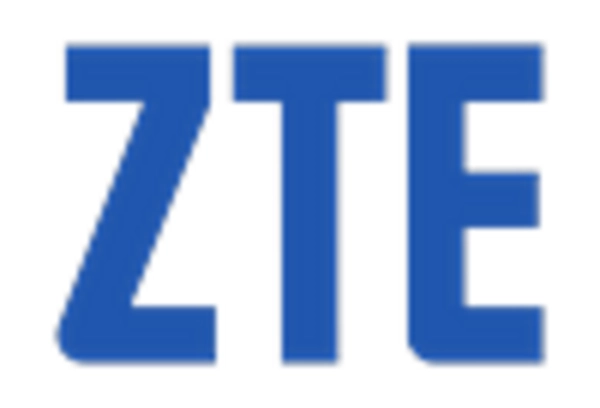Advancements in 5G Technology
The diameter signaling market is significantly influenced by advancements in 5G technology. As European countries roll out 5G networks, the demand for efficient signaling protocols becomes increasingly critical. 5G networks require enhanced signaling capabilities to manage the massive influx of data and support a diverse range of applications. The diameter signaling market is expected to grow substantially, with projections indicating a market size increase of over €1 billion by 2027. This growth is attributed to the need for seamless integration of signaling protocols that can handle the complexities of 5G architecture. Moreover, the ability of diameter signaling to facilitate real-time communication and support ultra-reliable low-latency services positions it as a key enabler in the 5G landscape, thereby driving its adoption across Europe.
Emergence of New Business Models
The emergence of new business models within the telecommunications sector is driving the diameter signaling market in Europe. As operators explore innovative approaches to service delivery, the need for flexible and scalable signaling solutions becomes apparent. The shift towards subscription-based models and the integration of value-added services necessitate robust signaling capabilities to manage user sessions and billing processes effectively. In 2025, it is projected that the adoption of such business models will increase by 20%, further propelling the demand for diameter signaling technologies. This trend indicates a shift in how telecommunications services are offered, with an emphasis on customer-centric solutions. As operators adapt to these new paradigms, the diameter signaling market is likely to experience substantial growth, reflecting the evolving landscape of the telecommunications industry.
Rising Focus on Network Security
In the context of the diameter signaling market, the rising focus on network security is a critical driver. With the increasing frequency of cyber threats, telecommunications providers are prioritizing the protection of their signaling networks. Diameter signaling, being integral to the authentication and authorization processes, plays a vital role in safeguarding sensitive data. In Europe, regulatory bodies are imposing stricter security standards, compelling operators to adopt advanced signaling solutions that enhance security measures. The market for diameter signaling solutions is projected to grow by approximately 15% annually as operators invest in technologies that mitigate risks associated with signaling vulnerabilities. This heightened emphasis on security not only protects user data but also fosters consumer trust, further driving the adoption of diameter signaling technologies.
Growing Demand for Enhanced Network Performance
The diameter signaling market in Europe is experiencing a surge in demand for enhanced network performance. As telecommunications operators strive to provide superior services, the need for efficient signaling protocols becomes paramount. This demand is driven by the increasing number of connected devices and the growing complexity of network architectures. In 2025, it is estimated that the number of IoT devices in Europe will exceed 30 billion, necessitating robust signaling solutions. The diameter signaling market is thus positioned to benefit from this trend, as operators seek to optimize their networks to handle the rising traffic and ensure seamless connectivity. Furthermore, the emphasis on high-speed data transmission and low latency is likely to propel investments in diameter signaling technologies, fostering growth in the industry.
Increased Investment in Telecommunications Infrastructure
The diameter signaling market is benefiting from increased investment in telecommunications infrastructure across Europe. Governments and private entities are recognizing the necessity of modernizing existing networks to support the growing demand for data services. In 2025, it is anticipated that investments in telecommunications infrastructure will reach approximately €50 billion, with a significant portion allocated to upgrading signaling systems. This influx of capital is likely to enhance the capabilities of diameter signaling solutions, enabling operators to improve service delivery and customer satisfaction. Furthermore, as competition intensifies among service providers, the need for efficient signaling mechanisms becomes crucial for maintaining a competitive edge. Consequently, the diameter signaling market is poised for growth as infrastructure investments continue to rise.


















Leave a Comment